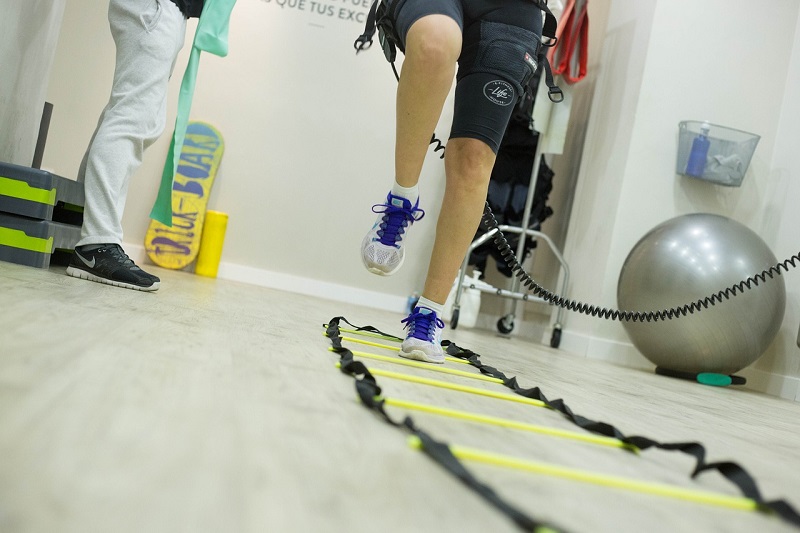
They say that “the only bad workout is the one that did not happen”. We say that a bad work out is one which happens, but without pre and post work out nutrition!
Exercise and nutrition are like the two sides of a coin. Right kind of nutrition before and after exercise is the ideal fuel for success on the journey of weight loss. Unfortunately, most of us fail to realize the importance of pre and post work out nutrition. One must understand that effective work out needs wholesome nutrition and the two are inseparable. To understand the importance of nutrition, it is also important to understand how the body responds and adapts to physical activity. Different kinds of activities have different nutritional requirements and one bill does not fit all. This article aims at providing you with an overview of exercise physiology and pre and post workout nutrition.
Let us have a look at what happens in our body when we exercise:
• When we exercise, our body demands more energy. This energy is obtained from carbohydrates, proteins and fats. Carbohydrates, fats and proteins break down in the form of ATP (Adenosine triphosphate) which is the “molecular unit of currency” of energy transfer in the cells of our body. Finally, ATP is utilized by the muscles to contract during exercise.
• During the first 3-5 minutes of exercise, the body works hard to increase the oxygen delivery to the muscles. This is done by increasing the breathing capacity of lungs and pumping capacity of the heart. Till that happens, the body makes use of the available energy and that is produced in the absence of oxygen.
• For obtaining energy our body first prefers “carbohydrates that are stored as glycogen in the muscle and liver”. Breakdown of 1 molecule of glycogen in the presence of oxygen yields 39 ATP molecules. These stores typically last for 90-120 minutes of continuous vigorous activity.
• Once the carbohydrate stores get depleted, the body starts looking out for “fat” as the next source of energy. Fats form vast stores in the body and is more energy dense than glycogen. Breakdown of 1 molecule of fat yields 129 ATP molecules. However, we need to understand that the release of ATP’s from fat stores is much slower than carbohydrate stores. Thus, they are not a very ideal source of energy during high-intensity exercise.
• Unlike carbohydrates and fats, proteins are generally not used as fuel for energy by the body. Protein is mainly required to build, maintain and repair body tissues and synthesize vital enzymes and hormones. In certain cases when the overall calorie intake is low, the diet is extremely low in carbohydrates or the exercise duration is more than 2 hours, muscle mass is broken down to obtain amino acids (broken down proteins) that can be converted into glucose and used for energy.
Once we have understood the exercise dependent macronutrient demands of the body, it becomes very easy to supply the body with adequate nutrition before, during and after the exercise.

Pre-exercise Nutrition:
The pre-exercise meal must ideally be consumed at least 30 minutes to two hours prior to the scheduled work out. This will allow the body to focus on the activity and not on digesting the food. The closer the meal consumed to the activity, the lesser should be the calorie content of the meal. (A 100-150 calorie meal can be consumed 30-60 minutes before the workout and a proper meal containing 250-300 calories can be consumed 2 hours before the activity.)
• Meal consumed 2 hours before the workout: It must contain sufficient slow releasing complex carbohydrates to sustain during the exercise and moderate amount of proteins to prevent too much muscle breakdown during the workout. Fat content must be less, as fats take longer to digest. High-fat content can slow down the digestion of other nutrients by holding the food for a longer period in the stomach.
Sample foods that can be consumed as a meal 2 hour prior to work-out:
Mashed sweet potato with grilled/ baked chicken and vegetables,
Multi-grain roti with vegetable (add protein to the vegetable: Dal/ sprouts/ soy chunks or granules, chicken, egg, fish) and curd,
Oats porridge with a fruit smoothie,
Museli with milk and fruits
Tofu/ paneer (home-made) cutlets made up with sweet potatoes served with curd,
Quinoa with grilled chicken/ fish and vegetables
• Meal consumed 30 minutes prior to work out: This must be a meal that is easier to digest and must contain more simple carbohydrates which can provide instant energy to the body. This meal must be low in proteins and fats which take longer to digest.
Sample foods that can be consumed as a meal 30 minutes prior to work-out:
Fruit smoothie (Fruit + Yoghurt/ curd)
Fruit like a banana
Milk/ soy milk
Dates
People who prefer to exercise in the early hours of the morning, often do not have sufficient time to get a pre-workout meal. In such cases, it is okay to have a couple of dates or a banana to get instant energy. If the exercise is light in intensity, like brisk walking, the body will be able to manage even without a pre-exercise carbohydrate shot and one can do without a pre-workout meal.
Nutrition during exercise
Irrespective of the type of exercise or its intensity it is important to have frequent sips of water in between the exercise. This will help you to stay hydrated and prevent muscle cramps.
In case of a high-intensity exercise that lasts for more than 60-90 minutes, a carbohydrate shot in between will be helpful to sustain.
For e.g.: Banana, sports drink, protein bars
Post Exercise Nutrition
During exercise, carbohydrate stores are utilized for energy and the muscles undergo a lot of wear and tear. Hence, post workout, it is important to have a meal which is dense in easily digestible proteins. This helps in muscle repair and must be consumed within 30 minutes post workout.
Avoid skipping your post workout meal, as the depleted carbohydrates stores need to be restored and the worked out muscles need proteins for recovery
It is important to accompany this meal with some carbohydrates too. While the body utilizes the proteins for muscle repair, it can use the carbohydrates as the much-needed source of energy.
• Sample foods that can be consumed as a meal post-workout:
Egg white omelette/ scrambled egg (you can include 1 yolk) with multi-grain roti/ bread,
Boiled egg whites (you can include 1 yolk) with milk,
Protein shake,
Protein bars,
Chicken egg sandwich/ roll,
Veg tofu/ paneer multi-grain sandwich.
Avoid skipping your post workout meal, as the depleted carbohydrates stores need to be restored and the worked out muscles need proteins for recovery. If you skip the post workout meal or if you are not able to achieve the correct ratio of carbohydrates and proteins, you will end up losing muscle mass and also hamper its recovery.
Last but not the least, exercise is very important for greasing all the vital systems in our body, but this greasing will go in vain if the body is not fuelled sufficiently. Thus it is very important to watch your meal before and after exercise to attain your desired fitness goals.
(* The nutritional recommendations given above are meant for weight watchers who engage in 60-90 minutes of mild to moderate intensity physical activity. People with clinical conditions like liver disease, kidney disease, Gout or any other disease will need a specialized diet plan. This article gives a general outline for pre and post work out nutrition and is not intended to serve people who are looking at professional bodybuilding or athletic training.)
(Mariam Lakdawala is a Mumbai-based dietician and Dr Aparna Govil Bhasker is a noted bariatric surgeon. The views expressed are personal)